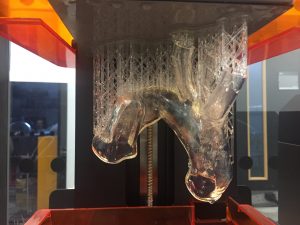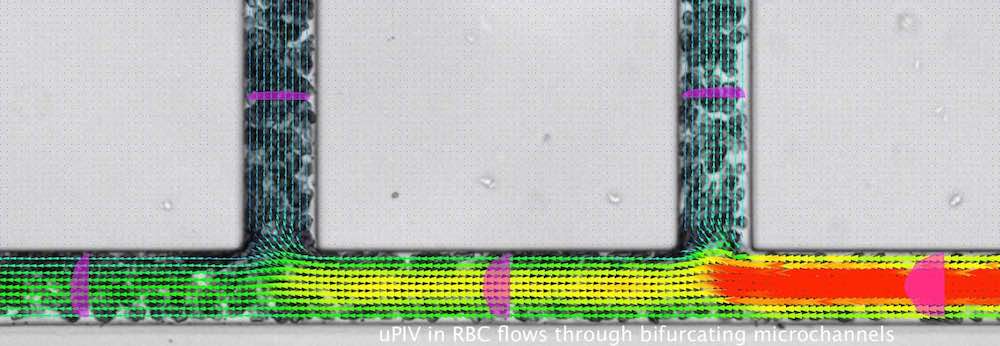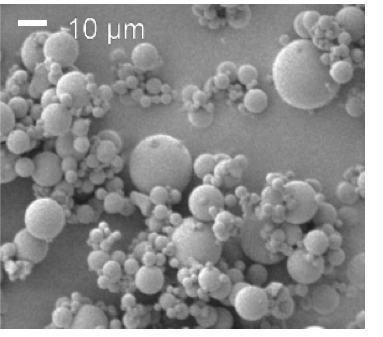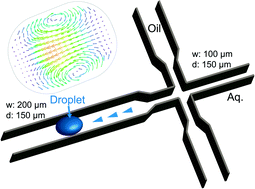Biofluids and cardiovascular engineering
Our interest is in haemodynamics in physiology and disease. Our work covers both the macro and microcirculation. We conduct in vitro experiments to understand blood flows in disease and develop biophysical markers and diagnostics for disease.
Our macrocirculation work in collaboration with Prof Diaz ( MUSE ) and vascular surgeons deals with complex vascular pathologies such as aortic dissection and arteriovenous malformation. We combine in vivo in vitro and in silcio tools to study the hemodynamics in such pathologies.

 We have developed a unique experimental facility to recreate patient specific, physiological blood flows in the lab.
We have developed a unique experimental facility to recreate patient specific, physiological blood flows in the lab.

We combine these with anatomically realistic 3D printed phantoms of the vessel of interest obtained from patient CT scans and optical flow diagnostic techniques such as PIV to resolve the flow characteristics of the pathology. This information helps to understand disease progression, aid clinical intervention decisions and also inform and validate numerical modelling (CFD) approaches for personalised medicine (see eg Bonfanti et al 2020, ABME).
To better understand microvascular flow phenomena and develop blood diagnostics we have developed in vitro approaches combining microfludics, microPIV techiques and advanced image processing techniques to study RBC transport in small channels with application to physiology and disease.
Our interest is on the effects of RBC aggregation and deformability on microhaemodynamics. We have studied such flows in bifurcating microfludic channels mimicking the microcirculation as well as complex geometries such as those found in medical devices. (see eg Sherwood et al, PLOS One)

Complex fluids
Our work focusses on elastoinertia instabilities of viscoelastic fluids and the behaviour of structured fluids such as particle suspensions; in particular on linking the microscopic behaviour of such suspensions to macroscopic flow behaviour.
Elastoinertia instabilities. Using a Taylor-Couette flow of polymer solutions we have probed elastoinertia instabilities and in particular the transition to elastoinertia turbulence (EIT) for a range of Boger and shear thinning fluids. We are interested on the mechanisms leading to EIT, the effects of shear thinning or added particles.

Space-Reynolds flow map in a Taylor Couette flow of a Newtonian elastic fluid (Boger). (see eg Lacassagne et al 2020, Cagney et al 2020).
Particle Suspensions: We combine a suite of techniques such as rheology, rheo-optics, microlfuidics and PIV to probe the behaviour of dense suspensions of non Brownian silica particles in complex formulations (as part of our EPSRC Future Formulations programme CORAL in collaboration with UCL Chemical Engineering, UCL Mathematics) as well as cell suspensions such as RBCs and algae.


Using commercial silica particles used in industry as abrasives or fillers, suspended in non aqueous and no Newtonian matrices we were able to probe frictional and adhesive mechanisms of shear thinning, develop routes to tune rheology and examine the effects of non-Newtonian matrices on suspension rheology (see eg Papadopoulou, 2020)
 Cellular suspensions. Using idealised microfluidic geometries to mimic microvascular bifurcations, μPIV and image processing we have simultaneously characterised the flow field and cell distribution of RBCs in bifurcations in the presence of aggregation (Sherwood et al 2012, 2014). We have also quantified RBC aggregation in situ (Kaliviotis et al, 2016) and examined the partitioning of aggregates (Kaliviotis et al 2017) and their effect on local viscosity (see fig below and Kaliviotis et al 2018).
Cellular suspensions. Using idealised microfluidic geometries to mimic microvascular bifurcations, μPIV and image processing we have simultaneously characterised the flow field and cell distribution of RBCs in bifurcations in the presence of aggregation (Sherwood et al 2012, 2014). We have also quantified RBC aggregation in situ (Kaliviotis et al, 2016) and examined the partitioning of aggregates (Kaliviotis et al 2017) and their effect on local viscosity (see fig below and Kaliviotis et al 2018).

 We have also experimented with algae suspensions, looking at their rheological behaviour of algae suspensions and its impact on downstream processing of algae biomass. Working closely with with Dr Mike Allan form Plymouth Marine Laboratories we have investigated the effects of motility and morphology on rheology by looking at flagellated (Tetraselmis chuii) and high aspect ratio species (Phaedodactylum tricornutum) in comparison to round, non motile species (Chlorella sp). see (Cagney et al, 2017).
We have also experimented with algae suspensions, looking at their rheological behaviour of algae suspensions and its impact on downstream processing of algae biomass. Working closely with with Dr Mike Allan form Plymouth Marine Laboratories we have investigated the effects of motility and morphology on rheology by looking at flagellated (Tetraselmis chuii) and high aspect ratio species (Phaedodactylum tricornutum) in comparison to round, non motile species (Chlorella sp). see (Cagney et al, 2017).
Vortex dynamics and fluid structure interaction
We have experimented extensively with flows past cylinders and cylinder arrays looking at the flow field and vortex shedding characteristics in flows past staggered and in line arrays of cylinders. We also looked at the effects of external flow forcing on the wake of a single cylinder and cylinder arrays (Konstantinidis et al 2004, 2005, 2007) and explored the possibility of using flow oscillations as a process intensification tool. Our forced oscillations work shed light to a number of fascinating phenomena such as lock in, vortex shedding modes and mode switching and subsequently gave rise to research into vortex induced vibrations.

Our work in this field focuses primarily on streamwise cylinder oscillations.Using time resolved PIV techniques we have been able to simultaneously capture the amplitude response and wake modes of the oscillating cylinder for a range of reduced velocities. Also to study the effect of a second degree of freedom on the measured response (see eg Cagney & Balabani, 2014).

Our current research focusses on the effect of body shape (see Cagney 2019) as well as the onset of vortex shedding under confinement (i.e. in confined flows past micropins, see Zhang et al 2019).
Mixing and transport phenomena
Mixing is ubiquitous in nature and engineering. Understanding transport phenomena can aid the design of processes and manufacturing. Our research focusses on quantifying mixing in vortical and swirling flows using PIV/LIF techniques. We are applied these techniques to study intra-and inter vortex mixing in Taylor Couette flows (Dusting-Balabani, 2009; Imomoh et al 2010), mixing through bluff body wake oscillations (Cagney-Balabani, 2016) as well as micro droplet mixing processes for diagnostics (Ma et al 2014, 2015). We currently extend this work in non-Newtonian flows.


LIF and PIV studies in a Taylor Couette flow (Dusting & Balabani, ChemEngSci, 2009).

Mean concentration fields in the wake of an oscillating cylinders showing the influence of vortex shedding mode on mixing (Cagney & Balabani, 2016)
Microfluidics
 Our work focusses on the development and characterisation of fluidic systems for point of care diagnostics and drug delivery applications. For example, we have studied the flow inside microdroplets, explored the microenvironment and the deformation of compound droplets under sheath flow focusing conditions relevant to cell encapsulation, in collaboration with Dr Shaohua Ma and Prof Huck. This work has featured on the cover of Lab on a Chip (see eg Ma et al 2014) Ma et al 2015)
Our work focusses on the development and characterisation of fluidic systems for point of care diagnostics and drug delivery applications. For example, we have studied the flow inside microdroplets, explored the microenvironment and the deformation of compound droplets under sheath flow focusing conditions relevant to cell encapsulation, in collaboration with Dr Shaohua Ma and Prof Huck. This work has featured on the cover of Lab on a Chip (see eg Ma et al 2014) Ma et al 2015)

In collaboration with two different groups, UCL Division of Surgery (Dr Wenhui Song) and University of Cape Town (South Africa) we have combined microfluidics with various types of hydrogels to study the micro flow characteristics of novel injectates for tissue engineering applications (see eg Chen et al 2018, Ngoepe et al, 2019)
Current work includes microfludic studies of microswimmers and on detecting organ rejection.
